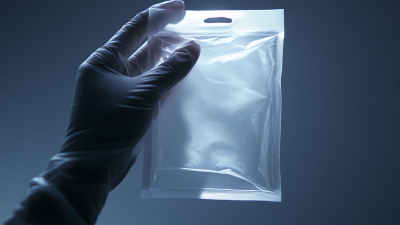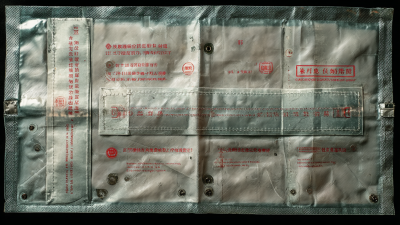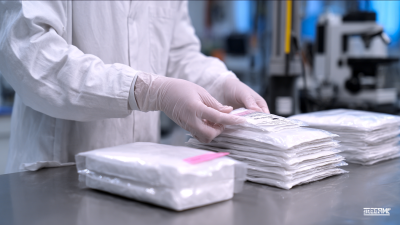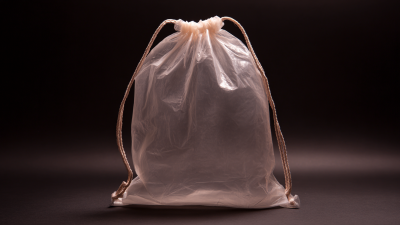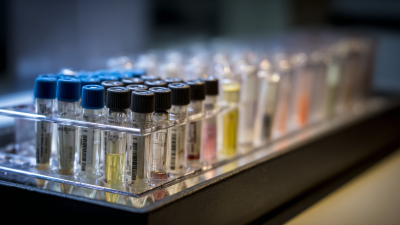 +86 178 5514 5298
+86 178 5514 5298
Leave Your Message
-
 CONTACT NUMBER
CONTACT NUMBER -
 CONTACT NUMBER
CONTACT NUMBER -
 CONTACT NUMBER
CONTACT NUMBER



In the ever-evolving landscape of medical logistics, the significance of an effective specimen transport system cannot be overstated. As healthcare professionals strive to maintain the integrity and safety of biological samples during transit, the selection of the right Specimen Transport Bag has become a crucial factor. Dr. Emily Carter, a leading expert in medical transportation solutions, emphasizes this necessity by stating, "The right specimen transport bag is not just a container; it’s the lifeline connecting diagnosis and treatment.”
This statement encapsulates the essence of why our list of the "Top 10 Specimen Transport Bags" for 2025 is vital to the medical community. These specially designed bags not only ensure compliance with safety regulations but also mitigate risks of contamination and sample degradation. As we dive deeper into this topic, we will explore innovative features, materials, and design principles that elevate these bags to the forefront of medical logistics. Understanding these attributes will help healthcare facilities optimize their specimen handling processes, ultimately enhancing patient outcomes and operational efficiency.
As we examine the top contenders in this category, we aim to provide insights that will guide professionals in making informed choices in their selection of Specimen Transport Bags.

When selecting specimen transport bags for 2025, it's crucial to focus on key features that ensure both safety and efficiency in medical delivery. One of the most essential aspects to consider is the bag's material. High-quality, durable materials are necessary to protect specimens from contamination and environmental factors. Look for bags that are made from leak-proof, puncture-resistant materials to guarantee that all contents remain intact during transit.
Another important feature is insulation. Temperature control plays a vital role in preserving specimen integrity, so bags that offer thermal insulation capabilities are highly recommended. Furthermore, a well-designed specimen transport bag should include ample storage compartments, allowing for organized placement of different specimens. Accessibility features, such as sturdy zippers and easy-to-carry handles or straps, enhance usability, making the transport process smoother for medical personnel. These combined attributes are instrumental in choosing the best specimen transport bags for the year ahead.
| Rank | Bag Type | Material | Size (inches) | Temperature Control | Features | Price ($) |
|---|---|---|---|---|---|---|
| 1 | Standard Transport Bag | Polyethylene | 10 x 12 | None | Zipper Closure, Biohazard Label | 2.50 |
| 2 | Thermal Insulated Bag | Nylon | 12 x 15 | Yes | Reflective Layer, Side Pocket | 15.00 |
| 3 | Leakproof Transport Bag | PVC | 9 x 12 | None | Suction Seal, Clear Window | 3.75 |
| 4 | Heavy Duty Transport Bag | Polypropylene | 14 x 18 | None | Reinforced Straps, Durable | 18.50 |
| 5 | Biohazard Bag | Low-Density Polyethylene | 10 x 10 | None | Warning Symbol, Twist Ties | 1.80 |
| 6 | Rugged Outdoor Bag | Canvas | 15 x 20 | Yes | Water Resistant, Adjustable Straps | 25.00 |
| 7 | Cooler Bag | Polyester | 12 x 15 | Yes | Insulated, Easy Clean | 20.00 |
| 8 | Sterile Transport Bag | Mylar | 8 x 6 | Yes | Sealed Package, Lightweight | 5.50 |
| 9 | Smart Transport Bag | Nylon | 14 x 18 | Yes | Integrated Temp Monitor, RFID Tag | 30.00 |
| 10 | Personal Use Bag | Cotton | 11 x 9 | None | Reusable, Washable | 7.00 |
In the realm of medical logistics, the choice of materials used in specimen transport bags is crucial for ensuring the safety and integrity of biological samples. Modern specimen transport bags are typically constructed from high-grade polymer materials such as polyethylene and polypropylene, which offer excellent barrier properties against moisture and environmental contaminants. According to a report by Grand View Research, the global medical packaging market is expected to reach $36.4 billion by 2025, highlighting the increasing demand for reliable and efficient specimen transportation solutions.

Beyond basic material choices, advancements in technology have led to the incorporation of antimicrobial coatings in specimen bags. These coatings are designed to minimize microbial contamination during transit, a pressing concern in laboratory environments. A study published in the Journal of Clinical Microbiology indicated that up to 15% of clinical samples can be compromised due to inadequate transport conditions. By utilizing innovative materials, manufacturers are enhancing the protective capabilities of specimen transport bags, thereby increasing the likelihood of accurate diagnostics upon sample arrival.
In the ever-evolving medical field, the importance of specimen transport bags cannot be overstated. According to a report by the International Journal of Environmental Research and Public Health, improper specimen handling and transportation can lead to a 40% increase in diagnostic errors, prompting the need for innovative designs that not only ensure safety but also enhance the efficiency of medical deliveries. With advancements in materials and technology, today's specimen transport bags are designed to meet various requirements, providing superior protection during transit.
The introduction of features such as temperature control, biohazard containment, and tamper-evident seals are crucial in minimizing contamination risks. A study from the National Institutes of Health highlights that specimen integrity is preserved in over 95% of cases when using specialized transport bags with these enhancements. The bags also incorporate ergonomic designs for easy handling, reflecting a growing understanding of the needs of healthcare professionals. As we approach 2025, the focus on safety in medical deliveries through innovative transport solutions is set to redefine standards and practices in specimen transportation, ensuring that sample integrity is maintained from collection to analysis.
When transporting medical specimens, maintaining the correct temperature is crucial for preserving their integrity and ensuring accurate results. One effective strategy is to utilize high-quality specimen transport bags specifically designed to provide insulation and regulate temperature fluctuations. These bags often come with built-in thermal liners that help maintain cool or warm conditions, depending on the type of specimens being transported. For instance, refrigerated specimens require bags that can keep a stable low temperature, while others might necessitate warmth. Choosing the right bag based on the specimen requirements can significantly reduce the risk of degradation during transit.
In addition to selecting appropriate transport bags, employing temperature monitoring devices can further enhance safety. These devices can track the temperature in real time, providing alerts if conditions move outside the desired range. Coupling this technology with clear labeling on the transport bags that indicate temperature-sensitive contents can help ensure that handlers remain aware of proper storage and transport protocols. Together, these practices create a comprehensive approach to temperature control, ultimately leading to safer and more efficient medical delivery.
In the realm of medical logistics, the efficiency and reliability of specimen transport bags play a critical role in ensuring safe delivery. A comparative analysis of leading brands reveals a significant variance in their features, driven by innovative designs and materials aimed at enhancing the preservation of specimens during transit. According to industry research, the global market for medical transport bags is projected to grow at a compound annual growth rate (CAGR) of 6.5%, driven by an increasing demand for high-quality, temperature-controlled transport solutions in healthcare settings.

Furthermore, the study of visual marketing impacts in other sectors, such as fast fashion, shows that aesthetic appeal can significantly influence consumer decisions. By applying similar principles to medical transport bags, companies can enhance their market presence. For example, design elements that communicate safety and reliability can become decisive factors for healthcare professionals choosing between brands. A report indicates that brands that invest in visually appealing and practical designs can improve user preference by up to 30%, underscoring the necessity for medical transport bag manufacturers to prioritize not just functionality, but also visual elements that resonate with practitioners in the field.
